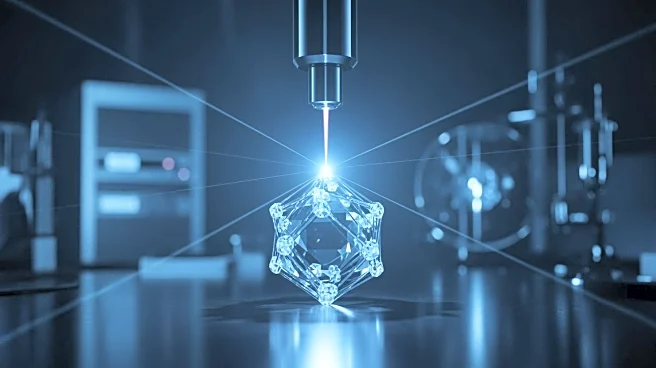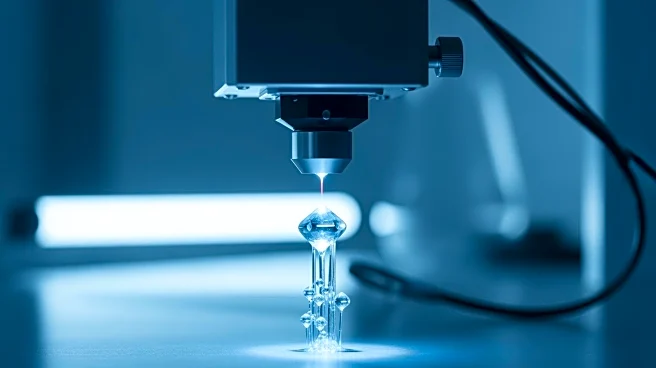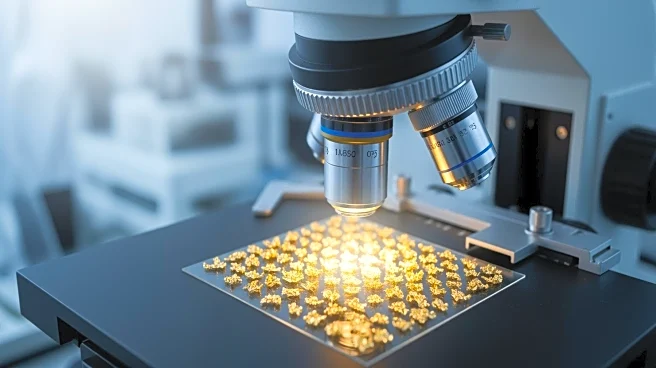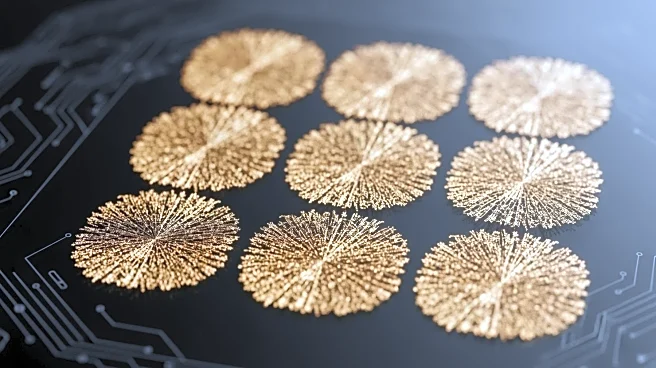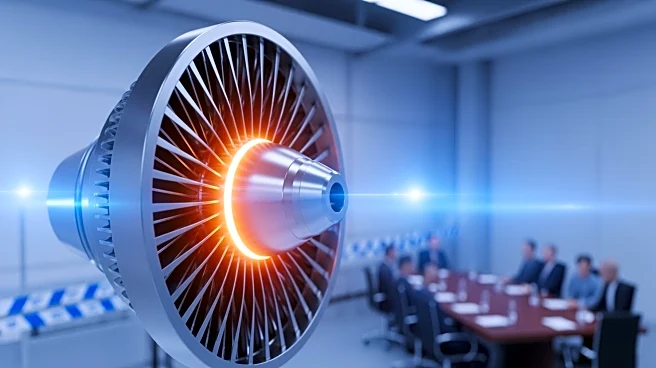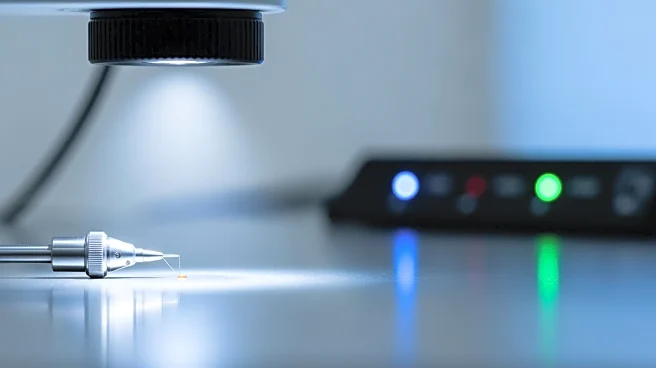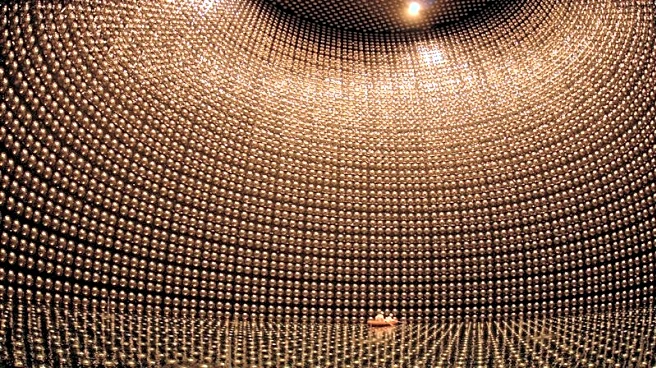What's Happening?
Researchers at Michigan State University, led by Elad Harel, have developed a novel method for creating crystals using a laser technique known as plasmonic heating. This process involves using a laser to heat a gold nanoparticle, which then triggers the formation
of crystals within a lead halide perovskite solution. By precisely moving the gold nanoparticle with lasers, the team can 'draw' crystals in specific locations on electronic devices. This method offers a more controlled alternative to traditional crystal growth techniques, which often result in crystals forming unpredictably. The research highlights the potential for this technique to be applied to various types of crystals used in electronics, such as those in solar cells and LEDs.
Why It's Important?
The development of this laser-based technique for crystal formation could significantly impact the electronics industry by reducing costs and improving the precision of crystal placement in devices. Crystals are integral to a wide range of technologies, including touchscreens, solar panels, and medical imaging devices. By enabling more precise and cost-effective crystal formation, this method could enhance the performance and affordability of these technologies. Additionally, the ability to 'draw' crystals could lead to advancements in astronomical instruments, potentially lowering the cost of space missions. The technique's reliance on low-cost lasers further underscores its potential for widespread adoption in various applications.
What's Next?
The research team plans to expand their work by using multiple lasers across different wavelengths to create more intricate crystal patterns. They aim to test these patterns in real devices to evaluate their performance and cost-effectiveness. If successful, this could lead to broader applications of the technique in the electronics industry and beyond. The team is also exploring the possibility of applying this method to other types of crystals, which could further enhance its versatility and impact.
Beyond the Headlines
This advancement in crystal formation technology could have broader implications for the field of materials science. The ability to control crystal growth with such precision may lead to new discoveries in the properties and applications of various materials. Additionally, the technique's potential to reduce manufacturing costs aligns with ongoing efforts to make technology more accessible and sustainable. As the research progresses, it may also prompt further exploration into the role of plasmonic heating in other chemical processes.
